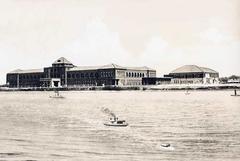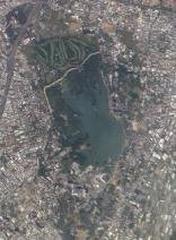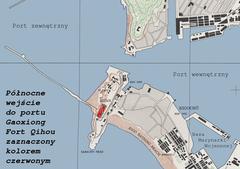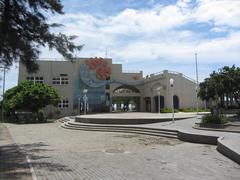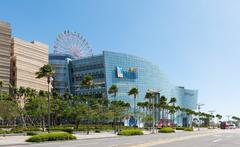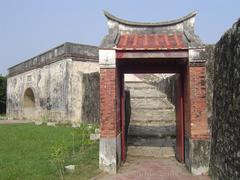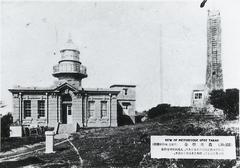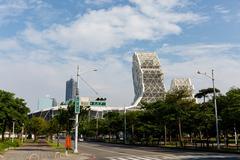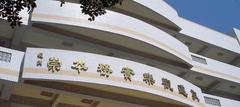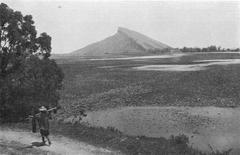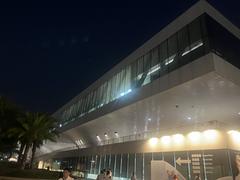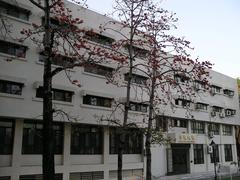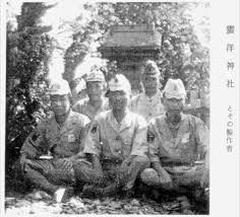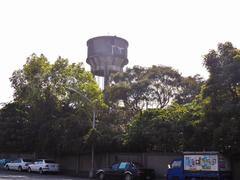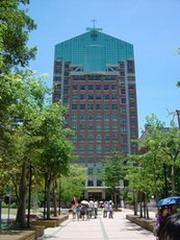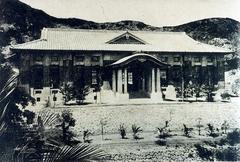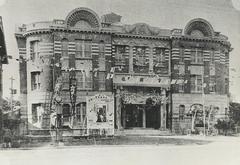
Kaohsiung Veterans General Hospital Visiting Guide: Tickets, Hours, and Tips
Date: 03/07/2025
Introduction
Kaohsiung Veterans General Hospital (KVGH) is a leading medical institution in southern Taiwan, dedicated to serving veterans, their families, and the general public. Established as part of Taiwan’s efforts to ensure equitable healthcare across the nation, KVGH has grown into a comprehensive medical center recognized for its clinical excellence, research, and community engagement (Kaohsiung Veterans General Hospital Official Website; Wikipedia). This guide provides essential information for visitors, including hospital history, visitor protocols, transportation options, cultural etiquette, and nearby attractions.
Table of Contents
- History and Development
- KVGH’s Role in the Veterans Healthcare System
- Expansion, Integration, and Recognition
- Medical Innovation and Research
- Addressing Healthcare Disparities
- Visitor Information: Hours, Directions, and Accessibility
- Nearby Attractions and Visitor Experience
- FAQ: Common Questions
- Cultural Etiquette and Practical Tips
- Summary and Final Tips
- Sources and Official Links
1. History and Development
KVGH was established to address the geographic imbalance in healthcare resources between northern and southern Taiwan. The hospital’s roots date to 1984 with the formation of an organizing committee, and its construction began in 1986 as part of the Executive Yuan’s major infrastructure projects. Officially opening in 1990 as a branch of Taipei Veterans General Hospital, it became independent in 1993, marking its emergence as a vital medical hub in the Kaohsiung and Pingtung region (org.vghks.gov.tw; Wikipedia).
2. KVGH’s Role in the Veterans Healthcare System
KVGH is one of four Veterans General Hospitals in Taiwan, forming part of a nationwide network that includes 12 veterans hospitals and 18 veterans nursing homes (Journals of the Chinese Medical Association, 2025). While originally intended to serve military personnel and their families, KVGH now provides advanced care to all residents, particularly in underserved southern regions where access to specialized healthcare was previously limited (wikimd.com).
3. Expansion, Integration, and Recognition
KVGH has grown into the largest public medical center in southern Taiwan, featuring 1,455 beds, 29 specialty centers, and a daily outpatient volume exceeding 5,000 patients (org.vghks.gov.tw). Its integration with the Pingtung Branch ensures seamless referrals and resource sharing for patients in more remote areas (org.vhlc.gov.tw). KVGH is a certified teaching hospital (since 1991) and has received numerous accolades, including the National Sustainable Development Award for its environmental initiatives (zh.wikipedia.org).
The hospital collaborates with leading universities for medical education and trains domestic and international healthcare professionals (wikimd.com).
4. Medical Innovation and Research
KVGH is at the forefront of medical research and innovation in Taiwan. It operates specialized centers in areas such as hyperbaric oxygen therapy, cardiovascular medicine, critical care, reproductive medicine, PET imaging, and cancer prevention (zh.wikipedia.org). The hospital’s commitment to advancing clinical practice is reflected in its active research collaborations, technology development, and quality certifications like the Symbol of National Quality (SNQ).
5. Addressing Healthcare Disparities
A core mission of KVGH is to reduce healthcare disparities in southern Taiwan. By situating itself as the region’s primary public medical center, KVGH delivers essential services such as emergency care, disaster response, and community health promotion in areas that were previously underserved (Journals of the Chinese Medical Association, 2025). The hospital’s outreach includes telemedicine, mobile clinics, and support for rural providers (zh.wikipedia.org).
6. Visitor Information: Hours, Directions, and Accessibility
Visiting Hours
- General: 2:00 PM to 8:00 PM daily.
- Note: Certain wards may have different visiting schedules or restrictions, especially during flu season or public health emergencies. Always confirm with the hospital before visiting.
Ticketing
- No ticket is required for entry. Access is granted during visiting hours or for appointments.
Location and Directions
- Address: No. 386, Jhonghua 1st Road, Qianzhen District, Kaohsiung City, Taiwan (source).
- Public Transport:
- Red Line (KRT): Alight at Pizhou Station, then take a short bus ride or taxi, or walk from Ecological District Station.
- Bus: Multiple routes stop near the hospital (source).
- Taxi/Ride-sharing: Uber and LINE Taxi are available.
Parking
- On-site parking is available but can be limited during peak hours.
Accessibility
- The hospital is fully accessible, with ramps, elevators, and accessible restrooms (source).
7. Nearby Attractions and Visitor Experience
While visiting KVGH, you can explore nearby landmarks in Kaohsiung’s Qianzhen District:
- Pier-2 Art Center: Contemporary art and creative spaces.
- Liuhe Night Market: Famous for local street food and shopping.
- Love River: Ideal for scenic walks and river cruises.
- Shoushan National Nature Park: Hiking and panoramic city views.
- Kaohsiung Martyrs’ Shrine: Historical monument with traditional architecture (Kaohsiung Travel).
8. FAQ: Common Questions
Q1: What are the visiting hours?
A: 2:00 PM to 8:00 PM daily, but check with the hospital for ward-specific rules.
Q2: Is there an entrance fee?
A: No, entry is free.
Q3: How do I get there by public transport?
A: Take the Red Line (KRT) or buses; taxis and ride-sharing are also convenient.
Q4: Is the hospital accessible for people with disabilities?
A: Yes, with ramps, elevators, and accessible restrooms.
Q5: Are guided tours or events available?
A: The hospital occasionally offers health seminars and community events; check the official website for updates.
9. Cultural Etiquette and Practical Tips
General Behavior
- Speak softly and be respectful to staff and patients.
- Queue politely at all service areas.
- Use polite titles (e.g., “Doctor Wang,” “Nurse Lin”).
Visiting Etiquette
- Avoid taboo gifts (clocks, sharp objects, white flowers).
- Fruit baskets and snacks are appropriate; confirm dietary restrictions.
- Refrain from sitting on the patient’s bed.
Communication
- Most staff speak Mandarin; some English support is available.
- Bring translation apps or phrasebooks for smooth communication.
Dress Code
- Wear modest, clean clothing; avoid revealing attire.
Hygiene
- Use hand sanitizer and wear masks where required.
- Observe all posted health protocols.
Facilities
- On-site cafeterias, convenience stores, and waiting areas are available.
- Wi-Fi access may be available; inquire at the information desk.
Payment and Insurance
- Foreign visitors may need to pay upfront unless covered by insurance.
- Credit cards are accepted, but cash is useful for small purchases.
10. Summary and Final Tips
Kaohsiung Veterans General Hospital exemplifies Taiwan’s commitment to equitable, high-quality healthcare. Its convenient location, comprehensive services, and visitor-friendly facilities make it accessible to locals and international visitors alike. By respecting local customs and hospital protocols, your visit can be both smooth and culturally enriching.
For the latest information, consult the KVGH official website or download the Audiala app for updates and travel assistance.
11. Sources and Official Links
- Kaohsiung Veterans General Hospital Official Website
- Kaohsiung Veterans General Hospital Wikipedia
- The Role of Veterans Hospitals in Taiwan’s Healthcare System, 2025
- Kaohsiung Veterans General Hospital Visitor Guide
- Kaohsiung Veterans General Hospital International Medical Services
- Kaohsiung Travel
- NaviTaiwan Etiquette Guide
- Foreigners in Taiwan: Kaohsiung Travel Guide
Images and maps (e.g., “Kaohsiung Veterans General Hospital entrance,” “Hospital visiting hours notice,” “Kaohsiung cultural sites map”) should be added with descriptive alt tags to improve SEO and user engagement.

